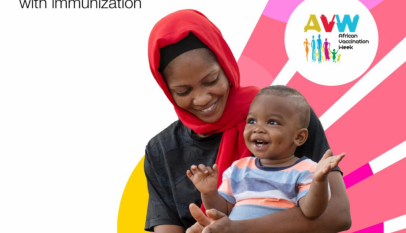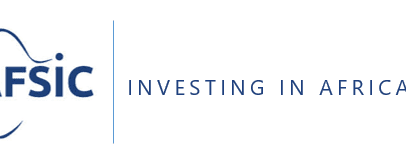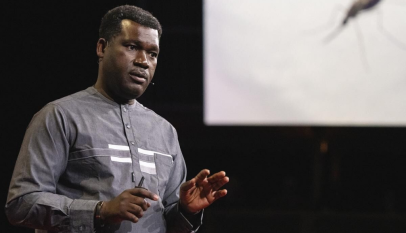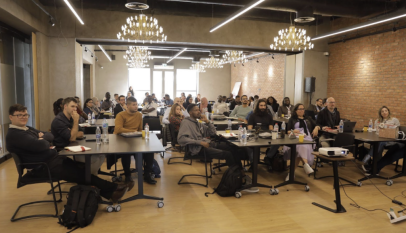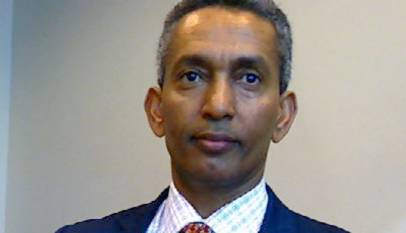INVESTIGATION: Life and death: Children’s battle with malnutrition in northern Nigeria
Nigeria continue to lose over 2600 under-five children to varied child-killer diseases like diarrhea, pneumonia, and malnutrition, daily; its northern half account for about 2.2 million out of the country’s 2.5 million severely malnourished children

By Adam Alqali
Six-month old Aisha Bilya looks frail and skeletal; she has very low weight for her height and clearly appears to be suffering from severe muscle wasting. Underweight, wasting and stunting are the primary indicators of nutritional deficiency resulting in undernutrition; it is obvious baby Aisha is suffering from severe acute malnutrition (SAM) and risks losing her life unless something drastic is done – and urgently!
“When I gave birth to her (Aisha) she was healthy and kicking but as I began to breastfeed her she began to lose weight and after a month the breast milk stopped flowing,” complains Dayyaba Dahiru, Aisha’s mother while speaking to African Newspage at the Yanawaki Community Management of Acute Malnutrition (CMAM) center in Kano, Nigeria’s second city.
Welcome to the state of Kano which seems to top every statistics in Nigeria: good or bad. As well as being the most populous state in the country, Kano is also home to the highest number of out-of-school children in Nigeria and its highest number of malnourished children suffering from various degrees of stunting, wasting and underweight.
When Dahiru brought the then 5-month old baby Aisha to Yanawaki facility – one of 30 Community Management of Acute Malnutrition (CMAM) centers across Kano state – she was asked to come back a month later – by which time baby Aisha would be 6 months old and could be administered with the Ready-to-Use-Therapeutic Food (RUTF): a dietary supplement for malnourished children during emergencies.
Today, Dahiru was at the facility to complain about the outcome of administering baby Aisha with the Ready-to-Use-Therapeutic Food (RUTF), which she got from the facility 9 days earlier. “When I came here 9 days ago I was given the RUTF and I began feeding her with it but she suddenly developed diarrhea and that is why she is looking even frailer today,” she recalls.
Zaliha Babayaro, a nutritionist at the Community Management of Acute Malnutrition (CMAM) centre at the Yanawaki primary healthcare facility, blames baby Aisha’s condition on a number of factors including maternal malnutrition her mother, Dayyaba Dahiru, suffered while she was pregnant with the baby, issues to do with sanitation and personal hygiene as well as lack of access to proper ante-natal care.
“Ideally, a newborn baby should be placed on the mother’s chest immediately after birth. After sometime the baby will begin to suck the breast naturally unfortunately, there is a cultural practice in our rural areas whereby members of the family will insist on washing of the nipples before putting the newborn baby on to it, and this affects the flow of breast milk later,” complains Babayaro.
She blames Aisha’s diarrhea on the fact that her system was not used to any food other than breast milk assuring that the baby’s system will adjust with time.
Funded by the Children’s Investment Fund Foundation (CIFF), the CMAMs are UNICEF’s response to the debilitating indices of malnutrition in 11 states across Nigeria’s northwestern and northeastern regions. Kano being the most populous state in Nigeria has 44 local government areas (LGAs) but there are currently only 30 CMAMs across 6 out of its 44 LGAs, which still leaves a huge gap which still need to be covered.
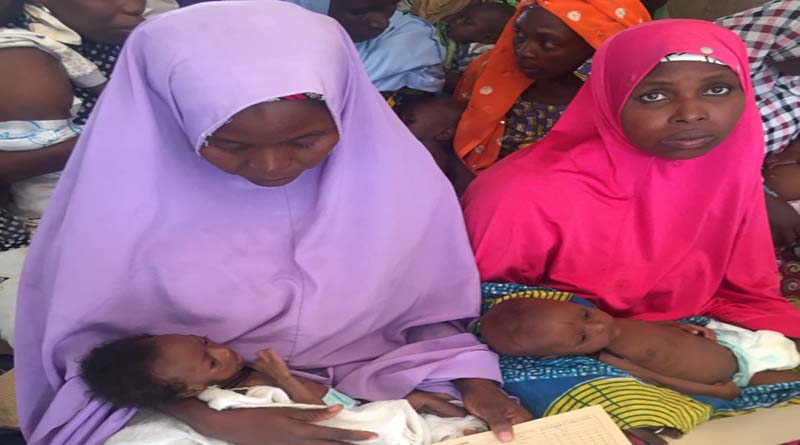
Nigeria’s silent crisis
Nigeria continue to lose over 2600 under-five children like baby Aisha to a wide range of child killer diseases like diarrhea, pneumonia, measles and malnutrition, every day, with malnutrition alone accounting for no fewer than half of Nigeria’s estimated child mortality and the country’s northern half being home to about 2.2 million out of the country’s 2.5 million children suffering from severe acute malnutrition (SAM).
“Malnutrition is called a silent crisis because it can be happening around us, and we do not always know it is there,” says Okoronkwo Sunday of the Civil Society Scaling-Up Nutrition in Nigeria (CS–SUNN). “Although we have all seen photos of malnourished children who look sick and very thin, they only represent a small portion of children who are suffering from malnutrition.”
Despite its glaring socio-economic consequences, there is an obvious little or even no interest by governments at all levels in Nigeria on funding nutrition, which can be seen in the fact that, until 2015, there was even no budget line for nutrition at federal level in Nigeria and even when it was introduced, the allocation was a paltry sum of Naira 40 million in a country of 170 million people.
According to Nigeria’s 2013 National Demographic Health Survey (NDHS), 37% of under-five children in Nigeria are stunted, while 18% and 29% are wasted and underweight, respectively, a large majority of whom are in northern Nigeria. Moreover, only 17% of children less than age 6 months are exclusively breastfed; only 67% of breastfed children age 6-9 months received complementary foods and only 10% of children ages 6-23 months are fed appropriately, in accordance with recommended infant and young child feeding (IYCF) practices.
Zero or low funding for nutrition
Lack of political will on the part of governments at all levels to prevent and address the challenge of malnutrition has meant until very recently, the federal and states government in Nigeria never bothered to provide a budget for nutrition and even when budget lines for nutrition began to be introduced it was more of a ‘tokenism’ than a genuine effort to address the menace which continue to claim the lives of thousands of infant children and their mothers as well.
The earliest available budget information for nutrition for Nigeria’s planning ministry was in 2012 when an unbelievably laughable sum of N100000 was budgeted for nutrition and the same figures were released. Although the ministry’s budgetary allocations for nutrition improved significantly over the years; there is an obvious lack of consistency in budgetary provisions and releases for nutrition.
For example, whereas the sum of N2100000 and N200000 were allocated for 2013 and 2014, respectively, there were zero releases for the 2 years; again whereas the sum of N6005400 was provided for nutrition in 2015 only N3000000 was released. A cursory look at the budgets of other key ministries like health, education, and agriculture also reveals the same pattern: zero allocation to nutrition for most of the years and in the years where such allocations were ever made mostly zero releases.
In the case of Kano, which has the highest burden of malnutrition in Nigeria and is home to almost 50% of malnourished children in the country, until 2017, there was no funding for nutrition in the state and even when such funding was introduced it was the paltry sum of N275 million; too little too late!
Murtala Inuwa is the chief nutrition officer at the Kano State Primary Healthcare Management Board, he claims the N276 million was “a great achievement” for the start adding that Kano also had plans to scale-up UNICEF’s CMAMs to the 44 local government areas of the state.
“The state is trying to get rid of the problem (malnutrition). Government has earmarked N276 million and N50 million has already been released. The plan is to gradually scale up the Community Management of Acute Malnutrition centres to all the 44 local government areas of the state,” he claims.
The socio-economic consequences of malnutrition
Perhaps the reason why successive governments in Nigeria at all levels do not pay the desired attention to public health issues including malnutrition has to do with the failure of policymakers in the country to understand the nexus between early child development and socioeconomic development.
Malnutrition, which accounts for more than half of all child deaths globally, has a lot of short and long term negative socio-economic consequences across its various manifestations like stunted growth, which results in poor physical development and mental retardation in children as well as make newborns and infants more susceptible to infections like diarrhea and pneumonia, subsequently diminishing their chances for survival.
“Eleven million children [in Nigeria] are stunted which means they are not growing well, their brain and immune systems are poor – they are 10 times likely to die,” complains Arjan de Wagt, UNICEF’s chief of nutrition in Nigeria. “Malnutrition is 100% preventable. Mothers and fathers don’t know the [nutritional] value of foods, there is need for awareness. And at the moment almost all interventions for nutrition are donor funded.”
Therefore, no nation that aspires to achieve sustainable socioeconomic development can afford to pay lip service to her future – the quality of healthcare services available to its children. Malnutrition is one of the world’s biggest child killer diseases; in consideration of its strategic importance in achieving quality healthcare delivery, improved nutrition – alongside ending hunger, achieving food security as well as promoting sustainable agriculture – are made targets of Goal 2 of the Sustainable Development Goals (SDGs).
A double-edged sword
Malnutrition which has been defined as “a condition that occurs when people consistently do not consume or absorb the right amounts and types of food and essential nutrients” is a double-edged sword which affects both mothers – during pregnancy and breastfeeding – on one hand, as well as their infant children – before and after delivery.
Thus, all efforts aimed at preventing and treating malnutrition in children must take into cognizance the fact that preventing child malnutrition begins with ensuring pregnant mothers eat balanced diet throughout their pregnancy and while they breastfeed their infant children. That is to say maternal malnutrition should be accorded the same priority as child malnutrition.
According to Nigeria’s 2013 National and Demographic Health Survey “although problems related to poor nutrition affect the entire population, women and children are especially vulnerable because of their unique physiology and socioeconomic characteristics. Adequate nutrition is essential to children’s growth and development. The period from conception to age 2 is especially important for optimal physical, mental, and cognitive growth, health, and development.”
In summary, malnutrition as a disease could be addressed simply by ensuring appropriate maternal nutrition during both pregnancy and lactation as well as optimal infant and young child feeding (IYCF) and care practices during the 1000 days of a child’s life, including ensuring immediate initiation into breastfeeding after birth until the first 6 months of a child’s life.
Social and behavioral change communication (SBCC) necessary
The duo of poverty and ignorance are some of the greatest causes of malnutrition in northern Nigeria, however, although millions of pregnant women and infant children in the region belong to low-income earning families, a significant number of such families – particularly those in rural areas – have access to food staples of high nutritional value.
That is to say although poverty is what pushes millions of pregnant women and consequently their children into malnutrition, ignorance of the nutritional value of locally-grown food staples including fruits and vegetables, is also at the heart of it. This is why social and behavioral change communication (SBCC) in the form of extensive health promotion and health education are very critical in ending the challenge of malnutrition in these rural areas.
“The bottom line is creating awareness among women through behavioral change communication,” argues Imam Wada, director in charge of public health at the ministry of health in Kano. “If you don’t properly educate the mothers on [among others] exclusive breastfeeding, whatever interventions you are bringing will not succeed.”
Ending malnutrition in northern Nigeria
More than any other factor, funding is most critical to ending malnutrition in northern Nigeria, at the moment, despite the 2.2 million out of Nigeria’s 2.5 million malnourished children being from the country’s northwestern and northeastern regions, most of the states still do not have budget lines for nutrition and those that provide funding for nutrition offer very little!
“Majority of children [in northern Nigeria] do not receive minimum acceptable diet. While 50% of child mortality in the country has malnutrition as underlining cause, no fewer than 1200, out of 2600 estimated daily deaths are caused by malnutrition,” observed a communiqué issued at the end of a two-day high-level policymakers summit on financing nutrition in northern Nigeria held at Kano in November, 2016.
The summit which was organized by Nigeria’s planning ministry, UNICEF and a Nigerian nonprofit, Civil Society Legislative Advocacy Centre (CISLAC) – with support from UKAID and Children’s Investment Fund Foundation (CIFF) – resolved to ensure funding for local production of RUTF, provide adequate funding for nutrition in the budgets of respective states as well as ensure effective implementation of the National Policy for Food and Nutrition (NPFN), amongst others.
Furthermore, Nigeria has a National Strategic Plan of Action for Nutrition (NSPAN) whose targets are guided by the National Policy for Food and Nutrition (NPFN). The plan’s targets are to reduce the number of under-five children who are stunted by 20%; reduce low birth weight by 15% and increase exclusive breastfeeding rates in the first six months to at least 50%, amongst others, by 2019.
“To eradicate malnutrition NSPAN has to be operationalized and fully implemented. Money is [critical] to the operationalization of the plan and other policies to contribute to the eradication of malnutrition in Nigeria. Findings from our recent study showed that funding is a major bottleneck in [its] implementation,” laments Sunday.
Although almost 3 years into its life span, Nigeria’s National Policy for Food and Nutrition (NPFN) which was developed in 2014 is still a mere policy document waiting to be implemented and its operational document the National Strategic Plan of Action for Nutrition (NSPAN) could be anything but a plan in action.
Until governments at all levels in Nigeria acquire the political will to fund nutrition and address malnutrition, including making huge investments in social and behavioral change communication (SBCC), 2.2 million of its precious children will continue to die every day in Kano and across northern Nigeria, courtesy of child malnutrition!

